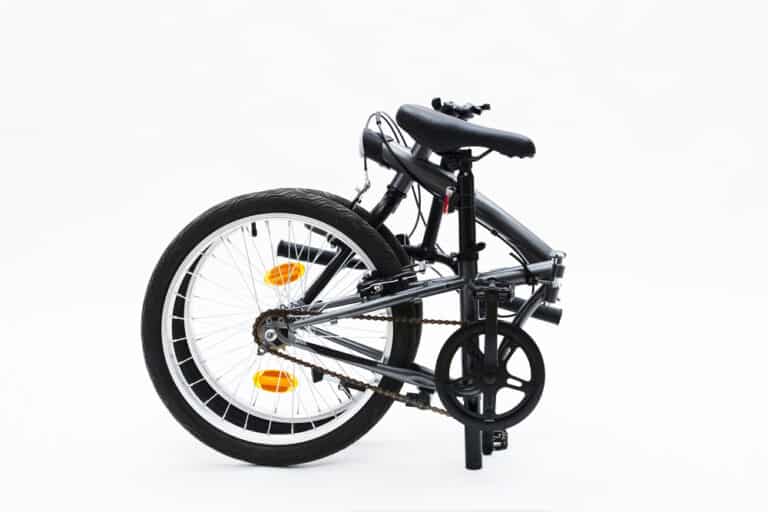Are Huffy Bikes Good?

Editorial credit: roaminegg / Shutterstock.com
You might be looking to invest in a new bike capable of getting you from point A to B, or perhaps you’d like to give cycling a go for the first time. If your searching brought you to Huffy bikes, you might notice their appealing low price point, but hold off handing over your hard-earned money until you hear what I have to say – I’ve made the mistakes! So, are Huffy bikes good?
Huffy bikes are infamous for having low-quality components that lack sturdiness and reliability. Due to mass production, they have poor materials resulting in heavy frames, brakes, or other parts that can break without warning. They are not suitable for long distances and challenging terrain.
You might think twice before letting a low-price bike persuade you to invest. Huffy might be some of the cheapest bikes, but it’s not reputable and has passed through many hands since its inception. Let’s cover what makes them risky and why you may or may not want to consider them. We’ll also look at what you should look for in a bike to ensure you spend your money wisely.
Are Huffy Bikes Good?
If you want to measure the success and potential of an assembled product, it’s wise to consider the materials that go into the product rather than rating its performance. Bikes are no exception, and while Huffy has a long history of producing bikes, most knowledgable cyclists do not consider them reputable or reliable because their parts are low-quality, so much so that they pose a safety risk.
Huffy bikes were in a better position in the days before the second world war, but the quality of their bikes soon diminished. Between the 1940s and mid-1960s, Huffy started mass-producing them while stripping away many features that added to their sturdiness, longevity, and reliability. When the early 1970s came, only embers of a once-reliable bike brand remained.
According to today’s bike standards, they’re far too heavy, poorly assembled, and have substandard components. You might take one and rebuild it into a semi-quality bike, but the cost of decent parts will run you more than the bike cost. Thus, spending slightly more upfront and getting a proper bike to save time, money, and resources would be more beneficial.
While a super-low-priced bike is undoubtedly tempting, remember you will get what you pay for with these bicycles. They wear much quicker, don’t be surprised if, after a few weeks, the components start to fail, and it can no longer take you from point A to B.
Huffy is a low-priced brand sold through big-box stores. There are issues with the quality of materials, assembly, assembly, servicing, serviceability, and the manufacturer itself. If you still find the price-point appealing, consider it a fine bike for a young child who will get it beat and battered and outgrow it within two years. Otherwise, it will likely not be suitable for long distances or strenuous terrains.
However, keep in mind that due to the low quality of their components, their brakes can be dangerously ineffective. Therefore, it may not even be fit for a young child. In fact, the bikes have become a gag among some people who say Huffy bikes have a reputation for dissuading more people from cycling than any other brand. Too many would-be cyclists get them because they don’t want to invest in a decent bike in case they don’t end up liking cycling.
Once around the block on a Huffy convinces them cycling isn’t for them, so they’re glad they didn’t waste their money. They might have loved the sport if they chose to ride a much better bike.
Is It Worth Buying Low-Tier Bikes?
Someone once said the duration of a marriage is directly proportional to the amount of money spent on the wedding. Whether that holds any truth or not, it is one hundred percent correct when you buy a manufactured product such as a bike.
You could opt to ride an inexpensive bike, but it would be in your best interest to first disassemble and reassemble the bike to ensure everything is proper. Afterward, you need to look at upgrading the brakes chase because there are various horror stories of cheap brakes failing when you need them most.
Moreover, avoid purchasing cheap bikes with just any suspension because, more often than not, they are incapable of supporting the bike’s heavy frame and become a ticking time bomb.
Therefore, the better investment would be to visit a bike shop and spend a reasonable amount of money for it to fit correctly. That way, you won’t risk buying and riding a bike that can get you injured or worse.
Are There Alternatives To Huffy Bikes?
While there are numerous other bike brands, if you’re looking for a safe alternative to Huffy bikes, you may consider Trek and Diamondback. Diamondback has a solid online presence and will ship a good-value bike for free. If you have basic assembly abilities and you are literate, you should be able to buy a great bike.
Trek has taken a different approach, working through dealers. Both brands are competitive, although you will likely pay slightly more for an assembled bike from your local bike shop.
When buying a bicycle, going for at least mid-range pays dividends. A good mid-range bike can last decades with yearly maintenance, and it’s more than sufficient for all your biking needs.
Unless you are at the pinnacle of the sport where every ounce of performance and stability play a role in getting you over the finish line, you won’t notice the difference.
Can Cheap Bikes Still Be Good?
The word cheap can have different meanings to different riders; it may refer to the actual price tag of a bike, the materials used, or the sensation you feel when you use the bike to travel.
If you’re referring to a $75 box store bike, the truth is that almost nothing on the bike will be good. The frames of box store bikes are heavy and made with cheap materials that are often poorly welded; adding any upgrade would be a waste of money.
The parts on these bikes – brakes, wheels, shifters, derailleurs – are low quality, and, consequently, replacing one component would not even slightly increase the bike’s performance.
If you want to obtain any benefit, you will likely need to replace all the parts, meaning you’re better off saving up for a more expensive and reliable bike.
If, when talking about cheap bikes, you refer to bikes within a $300 – $500 price range, then deciding on whether they are good or not becomes a little trickier because they already have much higher quality components. As such, if you were to upgrade their parts, it would only slightly increase their performance.
There are multiple variables to consider if you want to upgrade a used, high-quality bike. A bike that cost $1500 five years ago and is now selling for $500 is a terrific value.
You’ll almost certainly need to replace the chain, chainrings, and cassettes, among other worn components, and it’s an excellent time to upgrade. Consider seeking help from your local bike store on this topic.
Furthermore, avoid buying a bike with a suspension older than seven years old. Most dated shocks and forks have parts that are difficult to source.

Can You Get More Use Out Of A Cheap Bike?
Some things will improve your experience on the bike. Invest in good tires, a frame pump, some emergency tools (and a saddle bag), a rear light (front, too, if you want to ride at night), high-quality pedals, and possibly more comfortable grips. Of course, don’t forget to invest in a comfortable pair of riding shorts!
These components can possibly change the way you experience mountain biking, especially if you opt for an inexpensive bike. Beyond that, keep in mind that higher-end parts can get expensive.
A formidable hydraulic brake set, suspension fork, and wheelset will likely total more than the bike’s cost. In this case, saving your money and spending it on buying your next bike may be wiser.
The same also rings true for slightly better parts, such as going from a $30 rear derailleur to a $60 rear derailleur, which will not double the performance of your bike.
Why Should You Consider A Pricey Bike?
A more expensive bike starts its lifespan as a better-engineered machine, better equipped and more capable for its purpose. The frame has specific parameters in mind, while the components involve careful consideration to best correspond with how the manufacturer intends for you to ride their bike.
The more care that goes into a bike’s materials, the better the final result. An artisan might decide to construct a table from plywood or premium hardwoods. While the plywood table can still hold a plate and glass of wine, it cannot match the capabilities of a hardwood table that can accomplish the same feat for a much longer, likely many decades.
In the same way cutting dovetails and tenons on a plywood table unnecessarily wastes money, spending time and resources on a bicycle with poor-quality parts is not worth the investment.
Did you ever stop to think that entry-level bikes get marketed according to their aesthetic? A $200 mountain bike is not a mountain bike – instead, it’s a mountain-style bike intended for occasional riding on the road.
Similarly, a $400 road bike is not always a road bike. Instead, it is better suited for brief sessions on paved surfaces. Evidence of this claim exists in owner’s manuals, which detail the characteristics of entry-level bikes and list their severe limits on riding conditions and warranty terms.
Therefore, quality bikes have better warranties, better after-the-sale service, and longer life.
Conclusion
Huffy bikes are not quality bikes because the bikes have been mass-produced since around the 1940s, disregarding much of their quality. Due to their poor-quality parts, upgrading them would cost you more than you paid for the entire bike. Moreover, the materials are poor quality and unreliable, and the last thing you want is your brakes to fail when you or your kids need them most.






